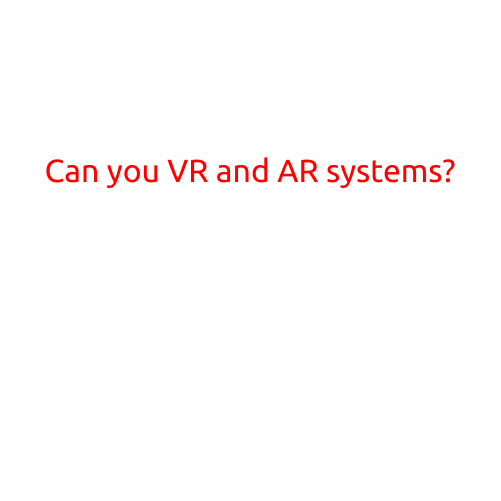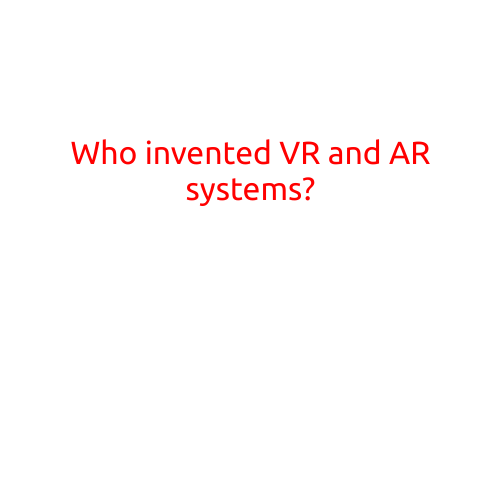
Can You VR and AR Systems?
Virtual Reality (VR) and Augmented Reality (AR) are two cutting-edge technologies that have revolutionized the way we interact with digital information. While they may seem complex and intimidating, the good news is that you don’t need to be a tech expert to understand and use these systems. In this article, we’ll explore what VR and AR are, how they differ, and how you can leverage these technologies to enhance your digital experience.
What is Virtual Reality?
Virtual Reality, or VR, is a computer-generated simulation of a three-dimensional environment that you can engage with and interact with. VR technology uses a headset or a device to transport you to a virtual world, allowing you to see, hear, and experience things that aren’t physically present.
With VR, you can immerse yourself in a virtual environment, exploring new worlds, playing games, or even learning new skills. VR systems typically consist of:
- Head-Mounted Display (HMD): A headset that covers your eyes and ears, providing an immersive visual and auditory experience.
- Controllers: Handheld devices that allow you to interact with the virtual environment.
- Tracking System: Sensors that track your movement and orientation, ensuring a seamless experience.
What is Augmented Reality?
Augmented Reality, or AR, is a technology that overlays digital information onto the real world. AR enhances your surroundings by adding virtual objects, sounds, or other content that can be interactive.
AR systems use a device’s camera and display to superimpose digital information onto real-world objects, people, or environments. This technology has numerous applications, including:
- Gaming: AR games can bring your surroundings to life, allowing you to play games that interact with the real world.
- Education: AR can provide interactive, 3D visualizations of complex subjects, making learning more engaging and effective.
- Shopping: AR can help you visualize products in your own space, making e-commerce a more immersive experience.
How Can You Use VR and AR Systems?
Both VR and AR systems are accessible, and you don’t need to be a tech expert to use them. Here are some ways you can incorporate these technologies into your life:
- VR Headsets: You can purchase VR headsets, such as Oculus Quest or HTC Vive, and play games, watch VR movies, or explore virtual environments.
- AR Apps: Download AR apps, like Pokémon Go or IKEA Place, to experience AR in action.
- Gaming Consoles: Many gaming consoles, such as PlayStation and Xbox, offer VR capabilities.
- Mobile Devices: Most smartphones and tablets can support AR experiences through their cameras and displays.
Conclusion
VR and AR systems are designed to be user-friendly and accessible. Whether you’re looking to enhance your gaming experience, learn new skills, or simply have fun, these technologies have something to offer. By understanding the basics of VR and AR, you can unlock a new world of possibilities and discover the benefits of these innovative technologies.
Remember, VR and AR are not just for tech enthusiasts – they’re for anyone looking to experience something new and exciting. So, what are you waiting for? Dive into the world of VR and AR and start exploring!





